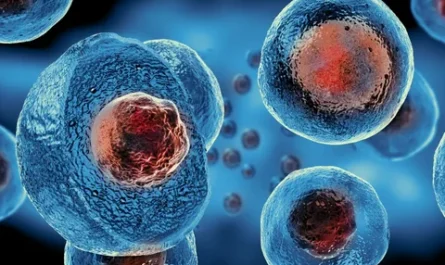
These are extremely small particles, usually between 1 to 100 nanometers in size. They exhibit unique physical, chemical and biological properties and functions because of their size. At the nanoscale level, ordinary materials can demonstrate extraordinary properties. Due to their small size, they have a large surface area to volume ratio. Their small size also allows them to interact with biological systems and cross cell membranes. Some key properties of nano materials include optical, magnetic and electrical properties that are different than their bulk counterparts.
Types of Nanoparticles
Metal
Metal nano materials such as gold, silver and platinum have unique optical properties. Gold particles exhibit interesting color changes based on their size and shape. They are useful for applications in biosensing, catalysis, electronic conductors and drug delivery. Silver particles are well known for their antimicrobial properties and are thus very useful for applications in infectious disease control.
Metal Oxide
Metal oxide particles include titanium dioxide (TiO2), zinc oxide (ZnO) and aluminum oxide (Al2O3). They are utilized for specialized applications requiring semiconducting or catalytic properties. TiO2 particles are used in sunscreens due to their ability to absorb UV light. ZnO particles are widely used as additive in various materials including plastics, ceramics, cement, rubber etc. due to its antibacterial properties.
Dendrimer
Dendrimers are spherical, nanoscale macromolecules with branched structures. They have numerous active surface groups which allow easy functionalization. Dendrimers are useful for targeted drug delivery and gene therapy applications. Due to their precise size and structure, dendrimers can encapsulate drugs and deliver them to specific diseased cells in the body.
Carbon Nanotubes and Fullerenes
Carbon nanotubes have a cylindrical nanostructure and exhibit extraordinary strength and electrical conductivity. They can be either single-walled or multi-walled depending on the number of graphene layers forming the cylindrical structure. Fullerenes are closed-cage fullerene molecules composed entirely of carbon, shaped like a hollow sphere, ellipsoid or tube. They include buckyballs, carbon nanohorns and graphene nanoribbons. Carbon nanotubes and fullerenes are promising materials for applications in electronics, optics, energy storage as well as biomedical applications including drug and gene delivery.
Applications of Nanoparticles
In Medicine and Healthcare
These nano materials find widespread applications in medicine and healthcare due to their small size which allows interaction with biological systems at molecular level. Some important applications include targeted drug delivery, diagnostic imaging, tissue engineering and regenerative medicine. Gold and iron oxide nanoparticles are used as contrast agents for magnetic resonance imaging (MRI) and computed tomography (CT) scans. Silver and zinc oxide nano materials are also used in wound dressings, implants and medical devices due to their antibacterial properties. Dendrimer nanoparticles are promising carriers for controlled release of drugs, genes and other therapeutics directly inside diseased cells and tissues.
In Electronics and Optoelectronics
Metal nano materials like silver and gold are used in electronics applications due to their high electrical conductivity. They are used intransparent conductors, printed electronics, flexible displays and other applications. Carbon nanotubes have excellent electrical conductivity and are emerging as future replacements for silicon in transistor-based devices. They enable faster computer processors and energy storage devices. Metal oxide nano materials like TiO2 and ZnO are used in solar cells and optoelectronics due to their photo catalytic properties. Fullerenes have potential applications in quantum dot solar cells and organic photovoltaics.
In Cosmetics and Personal Care Products
Nanoparticles are widely used in creams, lotions, sunscreens and other cosmetic products to impart novel functionalities. ZnO and TiO2 nano materials are commonly used as UV blocking agents in sunscreens due to their ability to absorb and scatter UV rays. Silver nano materials are utilized due impart antibacterial properties to creams and lotions. Silica nano materials are used as non-oily fillers to soak up excess oil from the skin whilst letting it breathe naturally. They provide a smooth and soft skin feel. Carbon-based nano materials including fullerenes are promising materials for cosmeceuticals claiming anti-aging benefits.
In Food Industry
Nanoparticles offer potential benefits to the food industry in areas like food preservation, packaging, and nutrient delivery. Silver nano materials are being studied for their antimicrobial effects in food storage and packaging. TiO2 nano materials incorporated in food packaging films and containers can act as UV protectants preventing oxidative degradation of foods. Nanoclay and nanocellulose are being studied for gas barrier properties in modified atmosphere packaging for preservation of meat and fruits. Nanodelivery systems can encapsulate antioxidants, vitamins and nutraceuticals which can then be delivered to the appropriate regions of the gastrointestinal tract.
Regulation and Safety Concerns
With increased commercial application of nanoparticles, concerns have also been raised regarding their safety. Due to their small size, they can potentially accumulate in human tissues and organs. Their effects on human and environmental health are not yet adequately understood. There are concerns that these particles may interfere with cellular functions and cause toxicity. Researchers are investigating the toxicity potential of different nano materials and developing biocompatible materials. Regulatory frameworks are being established to ensure safety of nanoparticles in consumer products. More research is also required to ensure that engineered nano materials do not adversely impact the environment over long term use and disposal. However, with appropriate safety measures and regulations in place, nano materials definitely have immense potential to revolutionize many industries.
In conclusion, nano materials are increasingly becoming integral building blocks and enabling agents of modern technologies. Their small size and large surface area give rise to fascinating and useful properties very different than their bulk materials. Nanoparticles find applications across diverse fields including electronics, energy storage, optics, healthcare, personal care and food. Proper understanding of their interactions, impacts and toxic potential will enable responsible development of various nanotechnology-driven products and innovations in the coming years.
*Note:
1. Source: Coherent Market Insights, Public sources, Desk research
2. We have leveraged AI tools to mine information and compile it


